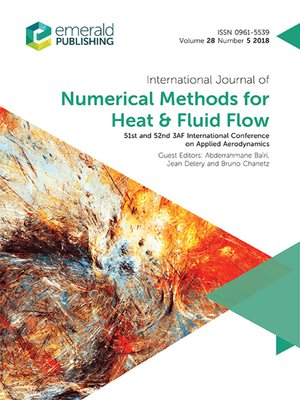International Journal of Numerical Methods for Heat & Fluid Flow, Volume 28, Number 5
ebook ∣ 51st and 52nd 3AF International Conference on Applied Aerodynamics · International Journal of Numerical Methods for Heat & Fluid Flow
By Abderrahmane Baïri

Sign up to save your library
With an OverDrive account, you can save your favorite libraries for at-a-glance information about availability. Find out more about OverDrive accounts.
Find this title in Libby, the library reading app by OverDrive.



Search for a digital library with this title
Title found at these libraries:
| Library Name | Distance |
|---|---|
| Loading... |
The 3AF International Conference on Applied Aerodynamics is organized yearly by the French Aeronautics and Astronautics Society (3AF) in a different venue in France known for its activities in the field of aeronautics and/or space technology. The conference is an excellent opportunity for scientific exchanges within the aerospace community where aerodynamicists from industry, research institutions and academics meet. Scientists and engineers from other fields involving fluid mechanics are also welcome. The 51st 3AF International Conference on Applied Aerodynamics (AERO2016) focused on problems involving a strong coupling between heat transfer phenomena and aerodynamics, or more generally fluid dynamics. Such phenomena play a crucial role in a large variety of devices including engines of all kinds, reentry vehicles, electronic components, buildings, air conditioning, etc. The 52nd 3AF International Conference on Applied Aerodynamics (AERO2017) was an opportunity to focus on recent developments in flow-control techniques aiming at the development of greener vehicles, more comfortable means of transportation, environmental "friendliness" and sustainability. This involves improvements in aerodynamics performance, thermal control, reduction of fuel consumption and emissions, as well as reduction of other negative impacts on the environment such as noise, wake vortices, soiling, etc. The techniques involved are passive and active devices, contouring, energy deposition, morphing, but not limited to the aforementioned. Flow control is present in a large number of applications including aircraft and UAVs, helicopters, automobiles, trains, ships, wind turbines, missiles, space launchers, turbo-machinery, environmental management in buildings, combustion chambers, etc.Among the many aspects of the problem, the following items were considered: control theories and applications, high speed and internal flows, acoustics, transition and wake control, heat transfer phenomena control, ground vehicles, actuators and sensors, skin friction control, closed loop control, morphing.







